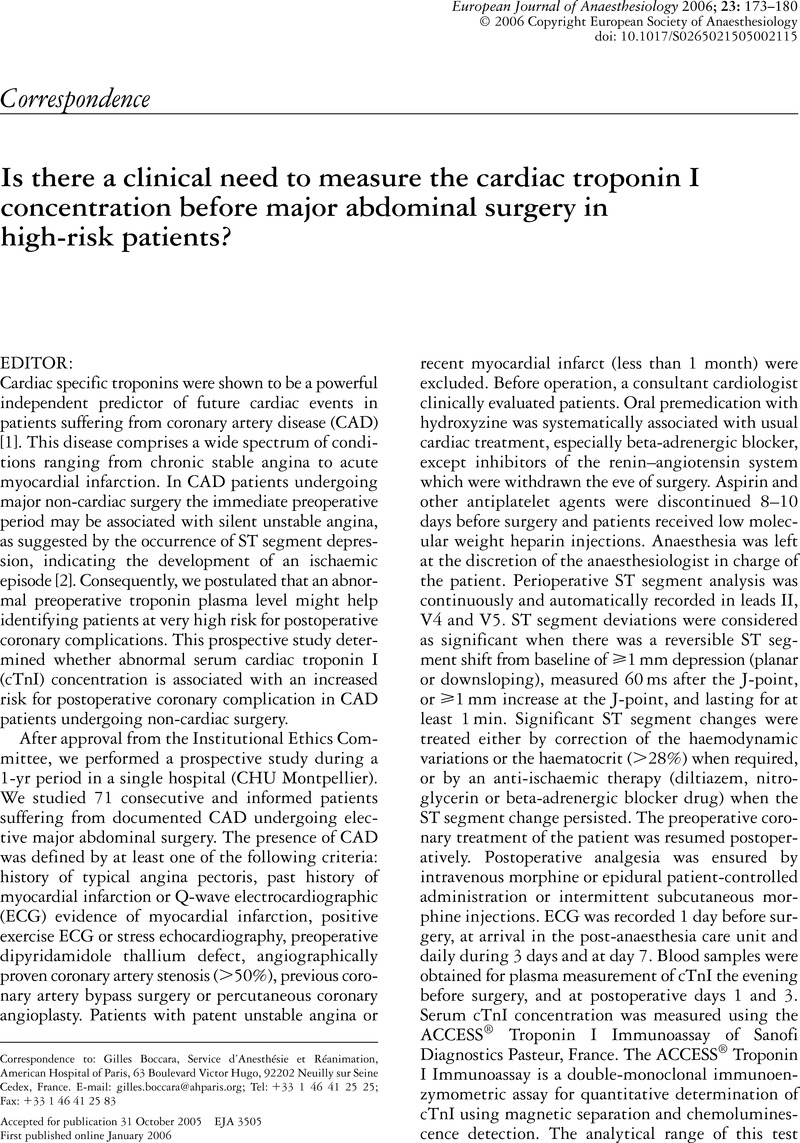Crossref Citations
This article has been cited by the following publications. This list is generated based on data provided by Crossref.
Fellahi, J.-L.
Piriou, V.
and
Longrois, D.
2011.
Biomarqueurs cardiovasculaires dans la stratification du risque opératoire.
Annales Françaises d'Anesthésie et de Réanimation,
Vol. 30,
Issue. 2,
p.
126.
Fellahi, J.-L.
Fischer, M.-O.
and
Daccache, G.
2012.
Les biomarqueurs en médecine d’urgence.
p.
365.



